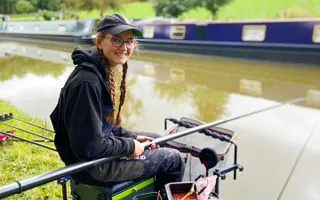Being a strong swimmer may not save you if you fall into cold water. Knowing how to behave can save lives.
Learn the Water Safety Code
- Stop & Think
- Stay Together
- Call 999
- Float
Unseen dangers
From the safety of a canal bank, water can look extremely inviting. But every year young people get into trouble as a result of dangers they cannot see.
- Low water temperatures can cause the body to go into cold water shock and can claim your life in minutes, even if you are a strong swimmer.
- It’s difficult to estimate the depth of the water. It may be much deeper or shallower than expected and cause serious harm if jumping in.
- There are often no suitable places to get out of the water due to steep slimy banks.
- The ground shelves away very steeply so you can quickly become out of your depth.
- There is no way of knowing what lies beneath.
- Reeds and other plant life can get tangled around your limbs and keep you in the water
- Mud makes it difficult to walk even if you can stand up.
- Litter and waste such as pipes, shopping trolleys, sharp metal or broken bottles can trap your feet as well as cause injury.
- There may be underwater machinery to help operate the locks, for example sluices.
- Swimming in open water can expose you to serious disease such as Leptospirosis (Weil’s disease).
- There may be hidden currents. Flowing water can be especially dangerous and when the locks are in operation the water flows extremely fast.
Knowing what to do if you get into danger in the water
Low water temperatures cause the body to go into cold water shock and even hypothermia.
Know how to fight cold water shock
If you were to fall into cold water, you are likely to be confused and frightened and your natural instinct will be to fight the water – to swim hard. But the cold water will make you gasp uncontrollably, your heart will beat really fast, you’ll lose energy quickly and breathe in lots of water, and eventually your muscles will become paralysed. You need to fight your instincts.
Float to live - be a starfish
If you float on your back you can keep your airways clear, control your breathing and allow the cold water shock to pass. Then you can call out for help, and you will have a much better chance of surviving.
Knowing what to do if someone else gets into danger
Never get into the water, even if you are a strong swimmer. Instead:
- Stay calm. Always think before you act.
- There may be other people around, so shout for help as loudly as you can.
- Dial 999 and ask for the Fire & Rescue Service. Explain your location clearly – use road names, bridge numbers and describe any landmarks. Use What3words if you can.
- Keep an eye on the person, keep talking to them and stay near them. Encourage them to float on their back in a star shape.
- If you can, throw a safety line or rope to them. Otherwise lie down to make yourself more stable and use a tree branch, stick or an item of clothing to reach out to them.
- If your dog goes into the water, don’t jump in after it. Instead, encourage it to swim to the edge.









